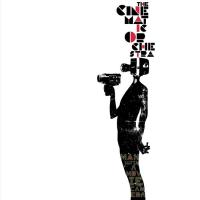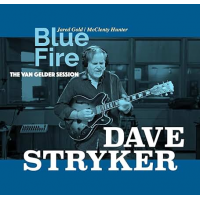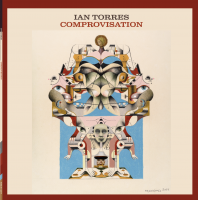Home » Jazz Articles » Album Review » Cinematic Orchestra: Man With A Movie Camera
Cinematic Orchestra: Man With A Movie Camera
With the re-emergence of a relatively obscure Russian silent movie from 1929, TCO got a chance to score a new soundtrack. The result, Man With A Movie Camera, is available both in CD form (as reviewed here) and as a DVD film with all kinds of bells and whistles. As always, it's a challenge to "see" what's happening with music like this, but to be honest TCO has a way of allowing imagination to bridge the gap between anticipation and reality.
The packaging doesn't list any of the players on this soundtrack, which was commissioned in 1999 to TCO leader (and electronic powerhouse) J. Swinscoe. A few months later it came to life in Portugal in the orchesta pit alongside the movie. This version has a distinct focus on improvisation, usually in the context of a lightly tempered groove and a non-intrusive layer of studio production.
The sixth track, "Postlude," stands without question as the finest tune on the record. It opens with pizzicato strings introducing a rippling lyrical soprano saxophone solo, which then builds in intensity (almost Coltrane-ish at the end) until a raucous drum solo. Hard-paced live sweat rules the backbeat, tastefully layered over scratches, programmed beats, and samples—in and out of soft interludes all the way to the end. Funky—but without cheese, cliché, or distillation.
The penultimate tune, "The Animated Tripod," has an oscillating, impressionistic orchestral flavor. It emphasizes composition and the many roles melody can play within a larger group setting. The extent to which these instruments are played live remains a mystery, though in some sense the answer is irrelevant. The feel remains live, and that's all that counts. Drums assume an important role as strings, piano and samples elaborate a textured theme. Nobody swings, but it doesn't matter. (Whatever swing appears on the record is far more implicit than direct.)
Of course, the film is from 1929, and that makes its superimposition onto live 21st century music an unexpected but welcome anachronism. Reminders of the film's social and temporal context emerge here and there. The introduction assumes a dark, somewhat mysterious character which—other than its obviously modern production—could hail from another era. "Dawn" signals an awakening with thickly reverberant textures in no rush to get to the end. And so on.
It's hard to adequately emphasize the many alluring aspects of Man With A Movie Camera. Its sheer, unadulterated imagery, brought into focus (soft or sharp) by improvisation, render it an experience far beyond the auditory. Play it again and you'll find something new. Trust me. I've been doing that for some time now.
Track Listing
The Projectionist; Russian Record (in Russian); Dawn; The Awakening of a Woman (Burnout); Reel Life (Evolution II); Postlude; Evolution (Porto Edit); Work It! (Man with the Movie Camera); Voyage; Odessa (Interlude I); Theme De Yoyo; The Magician (Interlude II); Theme Reprise; Yoyo Waltz; Drunken Time; The Animated Tripod; All Things to All Men.
Personnel
Cinematic Orchestra
band / ensemble / orchestraCinematic Orchestra: all music.
Album information
Title: Man With A Movie Camera | Year Released: 2003 | Record Label: Ninja Tune
Tags
About Cinematic Orchestra
Instrument: Band / ensemble / orchestra
PREVIOUS / NEXT
Support All About Jazz
 All About Jazz has been a pillar of jazz since 1995, championing it as an art form and, more importantly, supporting the musicians who make it. Our enduring commitment has made "AAJ" one of the most culturally important websites of its kind, read by hundreds of thousands of fans, musicians and industry figures every month.
All About Jazz has been a pillar of jazz since 1995, championing it as an art form and, more importantly, supporting the musicians who make it. Our enduring commitment has made "AAJ" one of the most culturally important websites of its kind, read by hundreds of thousands of fans, musicians and industry figures every month.



















